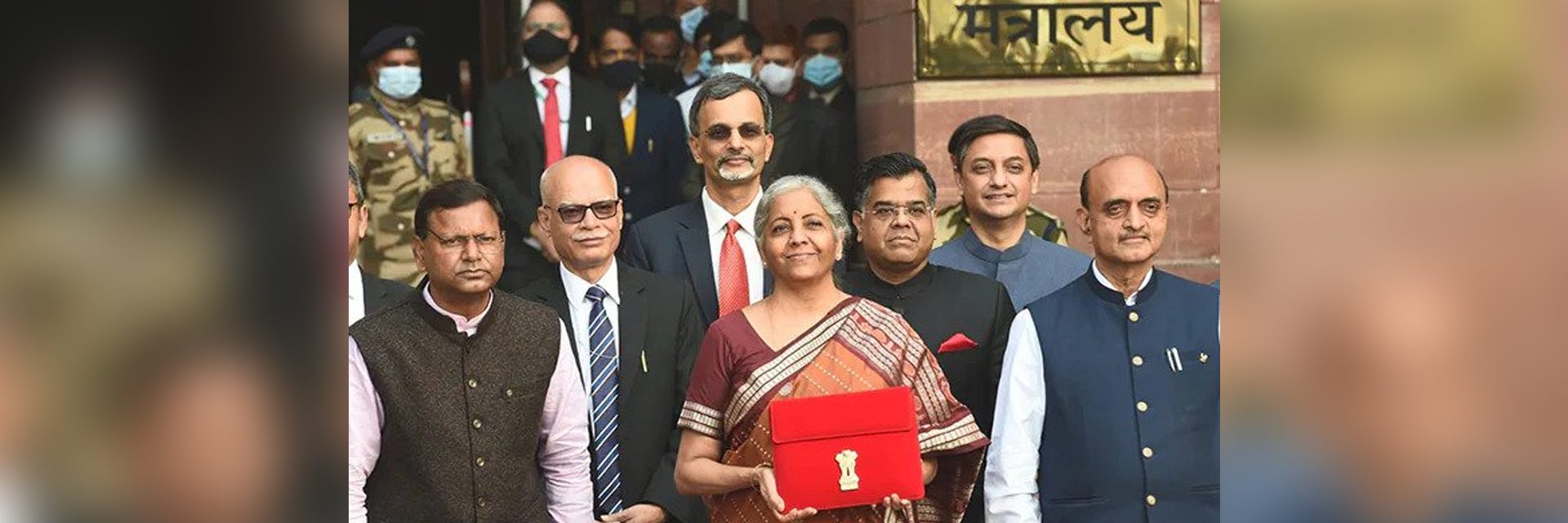(February 2, 2022) The Union Budget 2022 announced by finance minister Nirmala Sitharaman on February 1, 2022 promised Indian stakeholders “amrit kaal,” with reforms for the next 25 years. While many sectors are reaping the benefits, the common man is short-changed. TEAM GI decoded what the budget amidst the pandemic means for the industries, and how to descramble these numbers.
A startup for startups

Vijay Anand, founder, The Startup Centre
That apart, finance minister Sitharaman has announced an open stack for the national digital health ecosystem, which means unique digital IDs will be provided to promote universal access to healthcare facilities. However, according to Vijay Anand, founder of the Startup Centre, also popularly known as the Startup Guy, “the open stack feature seems promising, but iSPIRT has already been working on this for years.”
The fact that the government has extended tax benefits for the startup ecosystem though is a welcome relief. “Things have been on a massive upswing in terms of the number of startups that have emerged and unicorns that came to be. This move was smart to not rock the boat and introduce minimal interventions this year,” says Anand, adding, “There are some issues that we still need to address overall if we want to make the Indian ecosystem competitive to global ones. There is already an ongoing discussion with the FM regarding these and a 120-point document has been shared, in consultation with startups and stakeholders,” he tells Global Indian.
A socially uplifting budget?
When budget 2022 was announced, many thought that it has missed social sector announcements. Interestingly, this is one sector that was highly neglected. Despite the pandemic creating a severe impact on the health, education and food security of the poor and informal sectors in the past two years, budget 2022 turned a blind eye to the social sector by restricting the spending that could contribute to improvements in human development outcomes.
Budget 2022 sees Health and Family Welfare that accounts for ₹83,000 crore, go up by only 16 percent. Calling out the discrepancy, Avani Kapur, a senior fellow at Centre for Research Policy tweeted, “Investments in the social sector remain neglected in this year’s budget. What has been particularly surprising is the low investments for health and also for some key schemes that were a safety net during the peak of the Covid-19 crisis. For instance, while there remain 77 lakh households that had demanded work under MGNREGS still to receive it, allocations for the scheme saw a 26 percent decrease over past year’s revised estimates. Food subsidy has seen a 28 percent decrease even as the Pradhan Mantri Garib Kalyan Yojana providing additional free grains to families was extended till 2022. Similarly, the Ministry of Health and Family Welfare, sees only a ₹200 crore increase this year.”

Mayank Midha, CEO of GARV Toilets
Mental health for the pandemic inflicted
The burden of mental health issues in India clocks 2,443 DALYs (disability-adjusted life years) per 100,000 population. Lancet’s 2019 study stated that one in seven Indians are affected by mental disorders, and a survey by NIMHANS calls out a treatment gap between of 70 percent – 92 percent.
With this budget giving the health sector a robust boost, ₹4,176.84 crore allocated, this added focus on health infrastructure has been lauded by business leaders and the industry too.

Dr Amit Malik, founder, InnerHour
Optimistic about the passing of the Mental Health Act, the new initiative with NIMHANS and IITB in Budget 2022, Dr Malik adds, “It is very encouraging for those suffering from mental illness. It will increase awareness and provide early access to mental health support. We see this as a great step in the right direction and welcome it wholeheartedly.”
Tourism sector wants more
India saw 17.9 million foreign tourists arrive in 2019, while in 2018, the number was 17.4 million – seeing a growth of 3.5 percent. The recent budget allocation to the ministry of tourism – ₹2400 crore, 18.42 percent higher than 2021, is a start to revive the industry.

Sriharan Balan, chairman, Adventure Tour Operators Association of India
The pandemic has seen industries struggle, and bailouts given to travel in foreign countries. This would have been apt for the Indian tourism industry. Balan explains, “There is more burden in terms of TCS for outbound travel. Back-to-back lockdowns and increases in fuel price have played a spoilt sport. The government has definitely come out with a Bailout Funding Scheme rather than loans to uplift the industry from complete closures.”


